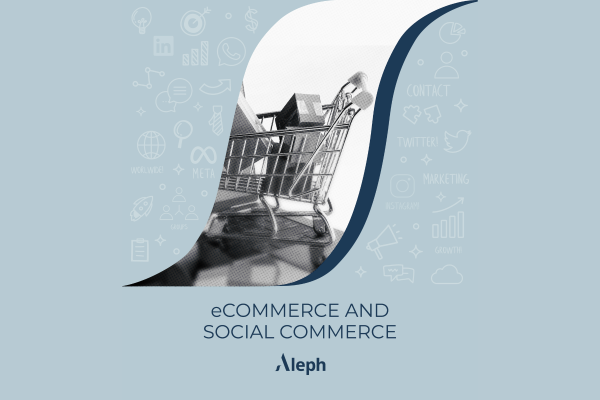
Since its inception in the late 1990s, social media has grown at an unprecedented rate. Today, there are 3.96 billion active users on social media. Retailers quickly recognized the untapped digital user base, and thus social commerce was born. With its entry into the market in 2007, Facebook was one of the first sites to introduce social commerce-related features, and despite the fact social commerce has been around for over a decade, it has seen a new surge in popularity across recent years. The onset of the Covid-19 pandemic during 2020 also made a significant contribution to the latest era of online social retail.
According to Grand View Research, the global social commerce market is projected to hit 3,369.8 billion USD by 2028. According to the same report, it will develop at a CAGR of 28.4 percent between 2021 to 2028.
A glance at what makes global social commerce so strong
In 2020 Facebook launched Instagram shops which explicitly targets Amazon, in turn combining e-commerce with the world’s largest social media platform. The global social commerce market is expected to grow at a staggering 31.4% during the ongoing Covid-19 pandemic. Through the course of 2021, social commerce will continue to expand as consumers stick to digital habits, whilst e-commerce and conventional retailers adjust to the post Covid-19 reality.
What is social commerce?
Social commerce is far more than just selling to customers via social media channels. It in fact incorporates a wide range of factors and verticals, such as:
Buying in bulk
Shopping in a social setting
Apps for mobile shopping
Retailer social media features
Integration of social media shopping
Why should your brand be concerned with social commerce?
Integrating e-commerce with social media can be highly beneficial. It allows customers to search for brands via social media and discover items they wouldn’t usually look for on an e-commerce site. Brand quest, influencers, and mobile payments are all examples of social commerce in action. Moreover, China’s most successful social media site, WeChat, is heavily investing in its e-commerce ambitions, creating a thriving social commerce mini-program that attracts global brands such as Sephora, Nike, Gucci, and Armani. The WeChat mini-programs are lightweight sub-apps that help brands to reach the market faster and sell easily inside the larger WeChat platform.
This notion enables businesses to connect consumers with their products based on their social behaviors. Thanks to artificial intelligence, retailers can now harvest real-time data on customers and transform it into actionable insights. For example, imagine that a set of data indicates a potential customer is affected by the celebrity endorsements of brands such as Prada or Louis Vuitton. Therefore in this situation the company might choose to target that user directly with an Instagram ad featuring celebrity endorsements.
Social commerce promotes third-party purchases from inside the native social media experience
This is evident in the consumer’s ability to search and compare items on Facebook before purchasing and without having to view the company’s website. Another example of this would be when a customer learns of a product through a tweet or an Instagram post and then purchases it directly from these channels.
While shopping can be a social event, with groups of friends meeting to shop together, the online shopping world is not. Additionally, regardless of the end purchase, many shopping decisions require the input of more than one person, whether it is a couple, parent, child, or friends.
Online shopping experiences are constantly changing and developing, becoming more social as technology advances, especially given the increased usage of smartphones and social media platforms. Social sales generate 50% of revenue across 14 major industries. It’s a no-brainer to sell where your consumers are instead of attempting to entice them to your website.
Technology is evolving day on day. Many existing major platforms have released new tech features such as payment options on Facebook shop enabled for new markets and TikTok integration with Shopify. We have also seen the progression of new platforms and channels such as, shoppable video, live streams, and bulk buying models.
It is the ultimate goal for marketers to master their campaigns, reaching the right audience, and ensuring a frictionless buying experience for their customers.
Additionally, consumers enjoy discovering new products on Social media, and according to IPSOS and Facebook research, a staggering 83% of the audience says that Instagram helps them find new products or services.
The main breakthrough will occur when full-fledged payment systems are introduced on all platforms across all markets. Until that point, we still have time to prepare.









